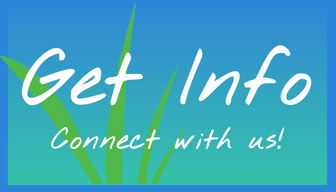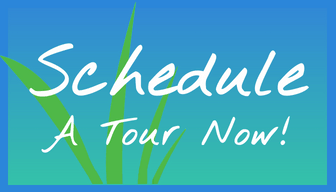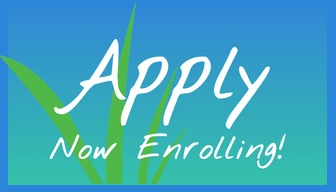 By Nancy Smith A little nervousness is a good thing, right? That’s what I kept telling myself as I sat across from the Burn Unit Research Development Committee of Shand’s Hospital at UF. Why did I have that third cup of coffee? What if they ask questions I can’t answer? Can they hear me talking to myself? I was there with the intent to establish an ongoing two-year research project with burn survivors. The idea is to quantify the longterm effects on grafted skin and range-of-motion when scar management is coupled with therapeutic massage techniques. Scar Management, especially working with traumatic scar tissue, has become my passion since graduating from FSM in the spring of 2003 (shout out to my FSM ’03 buds!). And let me make this perfectly clear: the FSM community is the reason the road has been successful. Having a seat at the research table with doctors, nurse practitioners and researchers to discuss therapeutic massage for burn survivors began with a meeting with Paul Davenport saying “YOU can do it” six years ago.
By Nancy Smith A little nervousness is a good thing, right? That’s what I kept telling myself as I sat across from the Burn Unit Research Development Committee of Shand’s Hospital at UF. Why did I have that third cup of coffee? What if they ask questions I can’t answer? Can they hear me talking to myself? I was there with the intent to establish an ongoing two-year research project with burn survivors. The idea is to quantify the longterm effects on grafted skin and range-of-motion when scar management is coupled with therapeutic massage techniques. Scar Management, especially working with traumatic scar tissue, has become my passion since graduating from FSM in the spring of 2003 (shout out to my FSM ’03 buds!). And let me make this perfectly clear: the FSM community is the reason the road has been successful. Having a seat at the research table with doctors, nurse practitioners and researchers to discuss therapeutic massage for burn survivors began with a meeting with Paul Davenport saying “YOU can do it” six years ago.  Traumatic scar client from Workshop Clinic With a team of FSM Alumni, we have been able to complete two research projects with pediatric burn survivors, publish a paper on the data, teach scar management courses internationally, open an After Care Clinic for Scar Management, and begin a nonprofit organization dedicated to scar management therapy, education and research.
Traumatic scar client from Workshop Clinic With a team of FSM Alumni, we have been able to complete two research projects with pediatric burn survivors, publish a paper on the data, teach scar management courses internationally, open an After Care Clinic for Scar Management, and begin a nonprofit organization dedicated to scar management therapy, education and research.  A beautiful young man from the Central Virginia Burn Camp Anecdotally, we have found the work translates well with other types of scar management clients. Scars that have been tacked down for decades release and we watch the muscle come alive again. Range of motion increases and hope reemerges with the traumatic scar clients. More study needs to be done on just how much to release at a time and the effect on the structure. We are working on that! The more I taught the 12-hour Continuing Education course on “Working with Matured Scarring,” the more great questions were asked by the students. From these questions the next series of classes were developed. The new 100-Hour Scar Management Certification Classes are in three phases. Phase One includes three classes: Techniques and Assessments, Nerves and Lymph, and Trauma, Pain and Protocol. Raquel Torres teaches the 16-hour Phase Two which addresses Assisted Integrative Stretching for Burn Scars. Raquel’s techniques and insight were developed over four years as we volunteered at the pediatric burn camps around the east coast. Phase Three combines the information from One and Two to develop long term protocol and accurate measurements of the scar tissue client’s progress. A series of journal entries are required with the student selecting the type of data-collecting that best suites their skills. All of the classes are built around the information we have gathered over six years of working with traumatic scar clients. And, I am still learning from every new client that comes through the door. Contact Nancy at the Happy Plus Foundation, Inc., www.thehappyplusfoundation.org or by email: nancy@happyplusfoundation.com. Get more information today on Nancy’s continuing education Scar Management Classes. Nancy Keeney Smith is a Board Certified Licensed Massage Therapist, Certified Manual Lymph Drainage Therapist, and a Florida and NCTMB Provider of Scar Management Workshops. Nancy is a member of the Associate Research Team at the Florida School of Massage, founder and Director of The Happy Plus Foundation, 3rd Vice-President of the AMTA Florida Chapter, member of the American Burn Association, the National Lymphedema Association and the Phoenix Society for Burn Survivors. Her private practice in Gainesville, Florida includes treatment of burn survivors, clients battling cancer, mastectomy scar management, as well as others with traumatic scarring.
A beautiful young man from the Central Virginia Burn Camp Anecdotally, we have found the work translates well with other types of scar management clients. Scars that have been tacked down for decades release and we watch the muscle come alive again. Range of motion increases and hope reemerges with the traumatic scar clients. More study needs to be done on just how much to release at a time and the effect on the structure. We are working on that! The more I taught the 12-hour Continuing Education course on “Working with Matured Scarring,” the more great questions were asked by the students. From these questions the next series of classes were developed. The new 100-Hour Scar Management Certification Classes are in three phases. Phase One includes three classes: Techniques and Assessments, Nerves and Lymph, and Trauma, Pain and Protocol. Raquel Torres teaches the 16-hour Phase Two which addresses Assisted Integrative Stretching for Burn Scars. Raquel’s techniques and insight were developed over four years as we volunteered at the pediatric burn camps around the east coast. Phase Three combines the information from One and Two to develop long term protocol and accurate measurements of the scar tissue client’s progress. A series of journal entries are required with the student selecting the type of data-collecting that best suites their skills. All of the classes are built around the information we have gathered over six years of working with traumatic scar clients. And, I am still learning from every new client that comes through the door. Contact Nancy at the Happy Plus Foundation, Inc., www.thehappyplusfoundation.org or by email: nancy@happyplusfoundation.com. Get more information today on Nancy’s continuing education Scar Management Classes. Nancy Keeney Smith is a Board Certified Licensed Massage Therapist, Certified Manual Lymph Drainage Therapist, and a Florida and NCTMB Provider of Scar Management Workshops. Nancy is a member of the Associate Research Team at the Florida School of Massage, founder and Director of The Happy Plus Foundation, 3rd Vice-President of the AMTA Florida Chapter, member of the American Burn Association, the National Lymphedema Association and the Phoenix Society for Burn Survivors. Her private practice in Gainesville, Florida includes treatment of burn survivors, clients battling cancer, mastectomy scar management, as well as others with traumatic scarring.




Hi Nancy,
Nice article… Sounds like you are doing some much-needed ground-breaking work. Happy to hear about your working with Shands!
Mary Reis
what a great thing you are doing for these poor people !! I hope this helps them mentally,visually and physically,!!
Thanks Kathy. We are finally making strides with some of the burn units in the area. I am very blessed to work with some amazing people. One step at a time. Hope to see you in one of the classes soon.
Nancy-
You have made the journey to help so many ….the road is a very long one with twists and turns but with each challenge you learn so many new methods that will truly enable so many to reach healing heights that seemed impossible. Keep up the discovery and your journey as it has made you SHINE !!
Hi Nancy,
I am a burns nurse woking in the burns unit in the Royal Hospital Belfast, I am currently working on assignment on scar management in adult burns patients but I am finding it difficult to access actual research in this are. I was wonderin if you had any websites or information that would be of benefit to me.
Thank you Oonagh
Please let me know how I can help. The research is very scarce and we have had some difficulty with publishing our most recent data. Can’t seem to quite fit it in the medical model-square peg round hole I guess. I have tons of anecdotal evidence I discuss in the classes and to anyone that will listen.
I would love to begin a dialogue with you about what you experience in Belfast. Perhaps we can figure something out for the burn survivors where you are and over hear.
Blessings to you from Gainesville Florida.
Nancy